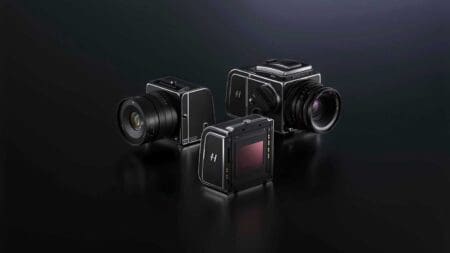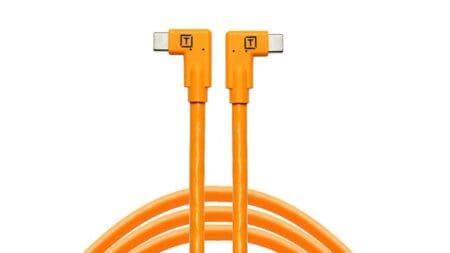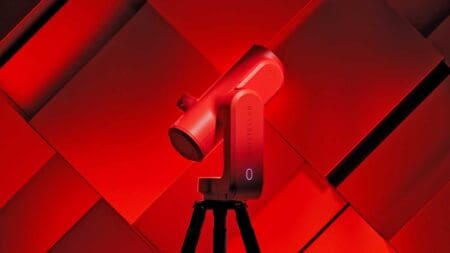Here’s just a few: do the legs unfold, do the leg locks work, are the feet all in place, is the quick release plate present and is the Toolz attached (in the case of a 3 Legged Thing tripods).
These checks are all straightforward and will take you moments to do, but could save you a real headache on your next venture out.
By learning how to clean a tripod and following these more in-depth checks, you’ll find that your tripod will stay in great shape for years to come.
Start by leaving it as you found it
Take note of how your shiny new tripod is folded when it arrives. The legs are folded up around the centre column, helping to keep the tripod compact and neat.

Keep this in mind each time you use your tripod and remember to fold those legs back up in the same way they started, then slip it back inside the protective bag that shipped with the tripod.
The tripod bags do an incredible job of protecting your support from knocks, scratches and life on the road, so they’re well worth using.
Keep everything together
I can’t count the number of times I’ve grabbed a tripod to find there’s no quick release plate. It’s good practice to return quick release plates to the tripod head after use. Even better, attach an L-Bracket to your camera, and you’ll never need to search for that elusive base plate again.
I have one muddy tripod
Tripods are often used out in the field and will, over time, get grubby – especially the feet and lower sections.

Maintenance starts at the end of a shoot, so before you leave the field, river, beach, or wherever, wipe off as much mud, water or sand as you can. Then make sure the quick release plate is attached before popping the tripod into its bag.
Don’t worry too much if there’s still a little dirt and water left on it, you can sort that out in the comfort of your home. The bag will hopefully keep the worst of the crud away from everything else.
As soon as you get home, remove the tripod from the bag, extend all the legs and the centre column to full height, give it a quick rise in fresh water and then dry the tripod with a clean dry cloth. Don’t leave it to air dry. You may need to pop the bag in the washing machine, depending on the grubbiness.
This is particularly important if you use the tripod in saltwater, on sand, or in mud. Make sure you clean the tripod as soon as you get home. Saltwater can be corrosive, so don’t delay in giving your tripod a good wash, and dry it thoroughly.
Cleaning leg locks
Keeping twist leg locks clean helps to ensure smooth and easy movement and locking. 3 Legged Thing tripods may look like they have 2 different twist locks, but they work the same with the same components. When cleaning these, the only difference is you will need to unscrew the cap on the Parallel lock first.

Your tripod may vary, so make sure to consult the manual to find out how to disassemble and reassemble your tripod.
To clean the friction locks, carefully unscrew the leg lock and pull the leg sections apart. You’ll see a thin green plastic shim (Chicken Lips) at the top of each section, set each shim aside; you’ll need them for reassembly. If these need a wipe down, a damp cloth does the trick.
Unscrew the leg lock entirely and remove the plastic claw washer from within the twist lock.
Using a damp cloth and clean toothbrush, wipe the parts down and follow the threads to get clean. If the dirt is stubborn, then use warm water and a tiny amount of washing up liquid and follow the threads again with the toothbrush.
Once cleaned, use a dry cloth to dry everything off. Never let them air dry.

With everything cleaned and just like new it’s time for reassembly.
Push the claw washer back into the twist lock and make sure it’s seated snuggly. Then place the lock back on the leg.
Next replace the shim (Chicken Lips) onto the leg section. 3LT has created a C shaped shim which features a small raised circle on the inside. This circle matches perfectly with a hole in the leg section to ensure perfect alignment.

Once in place you can then insert the leg back into the other section. This is when some silicone grease or Vaseline comes in handy. Using a small amount at a time, add some to the thread until you have the desired smoothness with the lock.
A quick tip when screwing the lock back into the leg section is to rotate the lock as if you were unscrewing it, as you rotate the lock you’ll feel or hear a slight click, this signifies the two threads meeting. When you hear or feel this you can reverse the rotation and start to tighten the leg lock.
This method of tightening helps to avoid cross-threading.
The cleaning procedure for the parallel locks is much the same. Extend a leg section, unscrew the cap at the top of the leg lock first and then remove the main leg lock from the leg section.
As you withdraw the leg section from the lock, you’ll see the ‘Chicken Lip’.
As before clean all parts with a dry cloth and toothbrush and then warm water if needed. During reassembly, use a little silicone grease on the leg lock threads.
Making sure you maintain your tripod will ensure that it gives you years of trouble-free use.
For more details on 3LT tripods check out 3leggedthing.com




Very informative! Make sure to store the tripod after cleaning when not in use. Wipe visible dirt, dissemble it and put it in a strong-yet-lightweight case. This is also helpful if you are travelling with your tripod. The best one has a heavy-gauge polythene construction and can protect your tripod under all challenging conditions. Flat sides will prevent rolling and thick foam padding in the lid can offer extra cushioning.